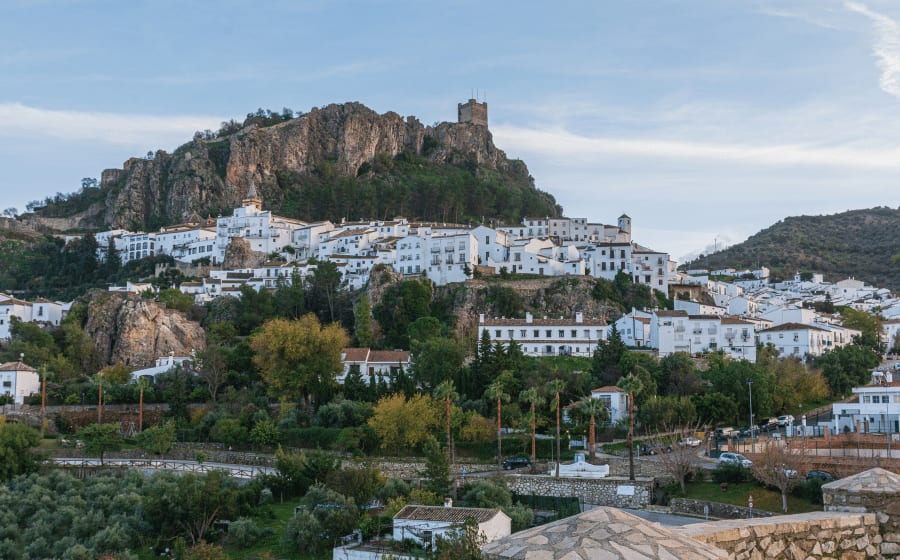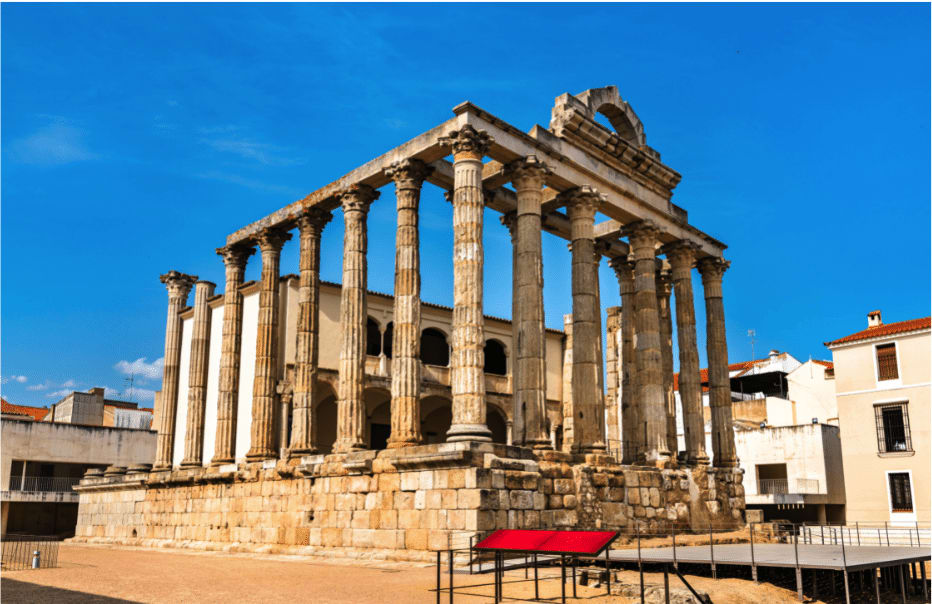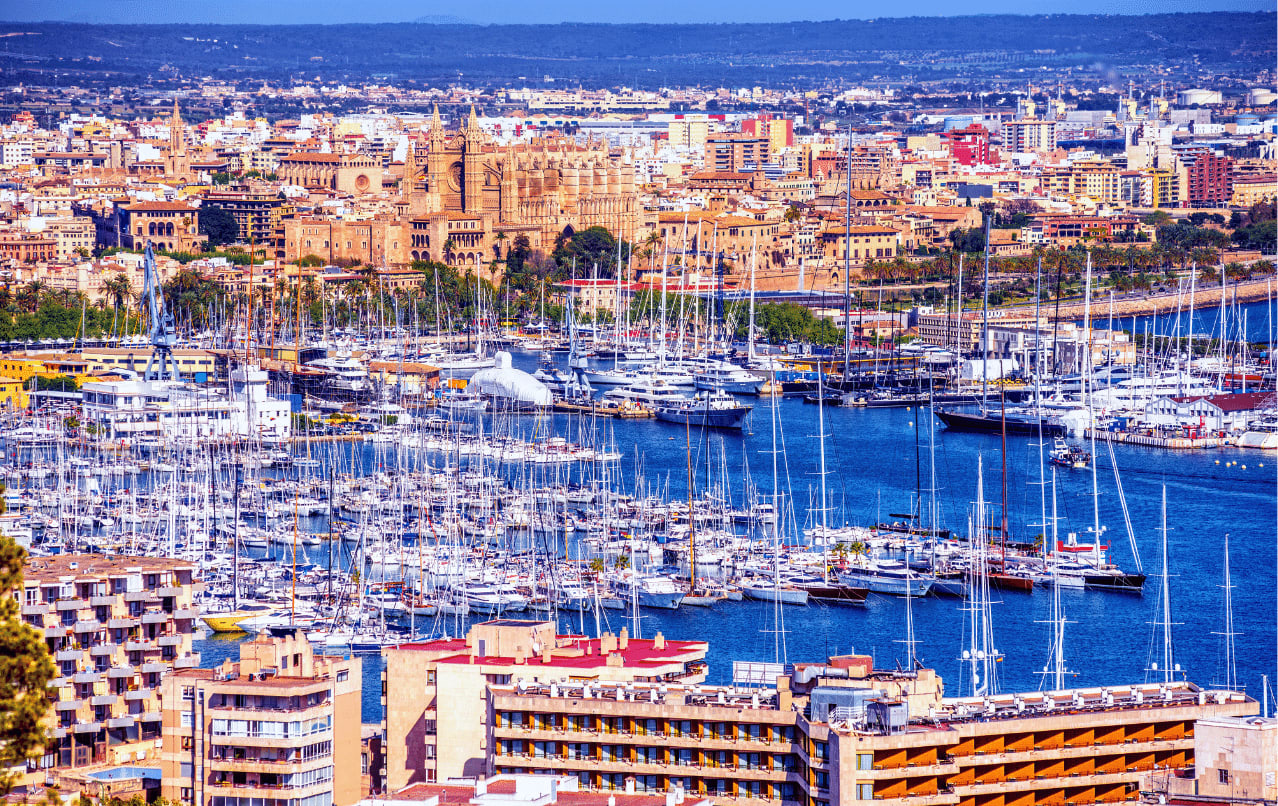The Largest Cities in Spain: A curious reason why they are so crowded
October 19, 2022
Win a FREE Trip to Spain!
Exciting Announcement! For the first time, we're thrilled to offer exclusive trips to the heart of Spain - an experience like no other. This isn't your typical tourist journey; it's a unique opportunity to immerse yourself in authentic Spanish culture, alongside real locals and our passionate team.
But there's more! Simply by requesting information about this amazing trip, you'll be entered into a special draw to win a Fully Paid Trip to Spain for Two. And that's not all - everyone who inquires will receive an exclusive bonus gift, valued at $500, available only now.
Ready to Discover the Real Spain?Click Here ↑ to Request Information & Enter the Draw!
Spain is the 30th most crowded country in the world! You might wonder how many people it holds in each city and which of them are the largest to have that many people.
To solve your doubts, I’ve gathered the data you should know about the population in Spain (including a table with the 760 cities ranked from largest to smallest at the end of this post)
The largest city in Spain is Madrid, with 3.305.408 inhabitants. The second largest city is Barcelona, with 1.636.732 people, approximately half as many residents as Madrid. These are the only two cities in Spain with populations exceeding one million.
Nevertheless, that doesn’t mean there aren’t other big cities in the country. There are 61 cities with populations between 100,000 and 1,000,000. And 697 cities with populations exceeding 10,000 besides the 61 mentioned before, along with Madrid and Barcelona. And they are all spread among Spain’s 50 provinces.
It is intriguing that, in Spain, the number of cities increases or decreases depending on the population according to Spanish Law. But why is it? If you want to know more about how Spain is divided, its territorial organization, population, regions, and provinces, then take a look at these posts:
- How many cities are in Spain? Population and Official Data from INE
- The Iberian Peninsula: 4 countries + 1 polemic colony that share space
- Does Spain have States? Discovering all 50 provinces and regions
Now let’s take a look at the biggest cities in Spain and the reason behind their large population.
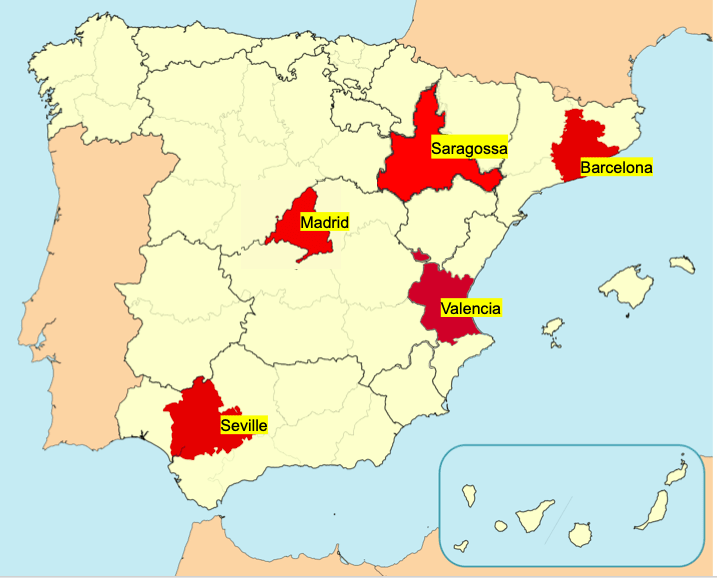
Table of Contents ▼ ▶
1. Madrid

Madrid is a developed city that only keeps growing and growing. It is the largest city in Spain, and according to the National Institute of Statistics, in 2021, it had a population of 3,305,408 individuals.
But why is Madrid so big and crowded?
Well… population growth is actually a good sign of economic health and stability, and it also attracts immigration. Nowadays, in a global context where large megalopolises are becoming more and more important, Madrid seems to be a shining star among others. The country’s capital concentrates the majority of public administrations and multinationals in Spain, allowing it to offer better job opportunities, especially during economic difficulties.
“Madrid is one of the most prosperous cities economically speaking. There are more job offers and more opportunities in general. I think this is because it is one of the most populated cities in the country, not without mentioning that it is the capital, and that is why many of the most important companies have their headquarters and central institutions here. For all these reasons, I consider Madrid the most stable and secure city, economically speaking.
-Juan, 53 years old
Madrid grows thanks to immigrants: Most of the growth of the last year in the Madrid region is due to the migratory balance. According to the National Institute of Statistics, there were 59,479 more people in 2021, representing 84% of the city’s growth.
Also, the unfavorable country situation of Venezuela has led to a significant increase in Venezuelans in Spain. This immigrant community is the fastest growing in the Madrid region, while other communities, such as Colombian and Hondurans, were also registered.
Moreover, some cities are emptying. In the last year, 43 small municipalities far from the metropolitan area have lost their demographic weight, which means that not everyone in the Madrid region has grown. The metropolis gains space on the regional map, but a good part of Madrid’s territory remains rural.
Another reason Madrid has more people is the region’s higher natality rates. The city is Spain’s capital, and it has a younger population than other cities and more migrating people who want to give birth there.
Spain has a gorgeous mix of people and many diverse cities full of nationalities and ethnicities. I’ve some other posts you might enjoy if you’d like to dig deeper into our mix of cultures.
- Is Spain Diverse? A beautiful mix of culture and traditions
- Spanish Ethnicity is NOT the same everywhere! I’ll tell you why
2. Barcelona
Barcelona has a population density similar to Bombay and is in eighth place among the world’s large cities in terms of the number of inhabitants per square kilometer. According to a study by the Ministry of Public Works and Urbanism in collaboration with the United Nations Population Fund.
After 1975, the city of Barcelona experienced very high volumes of immigration and high birth rates. Also, the migratory balance soars with the arrival of immigrants from South America and Eastern Europe.

Barcelona is a cosmopolitan, open city where social cohesion is a reality. The Catalan capital is among the best cities in the world in the rankings of quality of life, safety, and equity. Barcelona is a city where living well is easy.
I wrote an article about the perfect places to live in Spain, suiting your needs and lifestyle, where you can find your spot and become one of us someday: The Best City in Spain according to your different wants and needs. Also, Barcelona enjoys an ideal location between the sea and the mountains, where places like Costa Brava, the Pyrenees, and PortAventura are places that have everything to offer!
Similarly, globalization and a more open mentality with economic and technological advances are reasons why more foreigners choose the Catalan capital as their home. The community that grew the most in 2020 was Italian, while the British came after Brexit. Still, the most frequent nationalities found in Barcelona are French, Chinese, Pakistani, Argentine, and Peruvian.
3. Valencia

Valencia, “the city of arts and sciences,” is the third largest city in Spain after Madrid and Barcelona. It has a population of 789.744 individuals and locates on the Turia River banks, about a few kilometers away from the sea. Some others say that, without a doubt, the Valencian Fallas, a festival of International Tourist Interest, is one of the main reasons why Valencia is so crowded and full of tourists. And I must admit that it does deserve the hype.
Every year Valencia hosts many cultural and leisure events, attracting many people to the city. The city’s economy centers on services since nearly 84% of the employed active population belongs to the services sector. However, it also maintains an industrial base, with a percentage of the employed population of 5.5%. On the other hand, 1.9% of the employed active population survive in agricultural activities. We could say that today the Valencian demography is clearly and primarily urban, with a significant influence of migration due to tourism and seasonal migration of second homes, and with an evident tendency to move towards coastal towns.
Valencia has practically every possible day of sunlight of the year, and the winters are not as harsh as in other areas of the country. Also, its historic center is one of the largest in Spain, with approximately 169 hectares. Another reason there’s a significant influx of national and international tourism is its historical and monumental heritage. Valencia is one of the cities with the most important cultural sights.
It is truly blessed to have such representative monuments like The City of Arts and Sciences, the Miguelete, the Cathedral, the Serranos and Quart Towers, and the Silk Exchange.
4. Sevilla
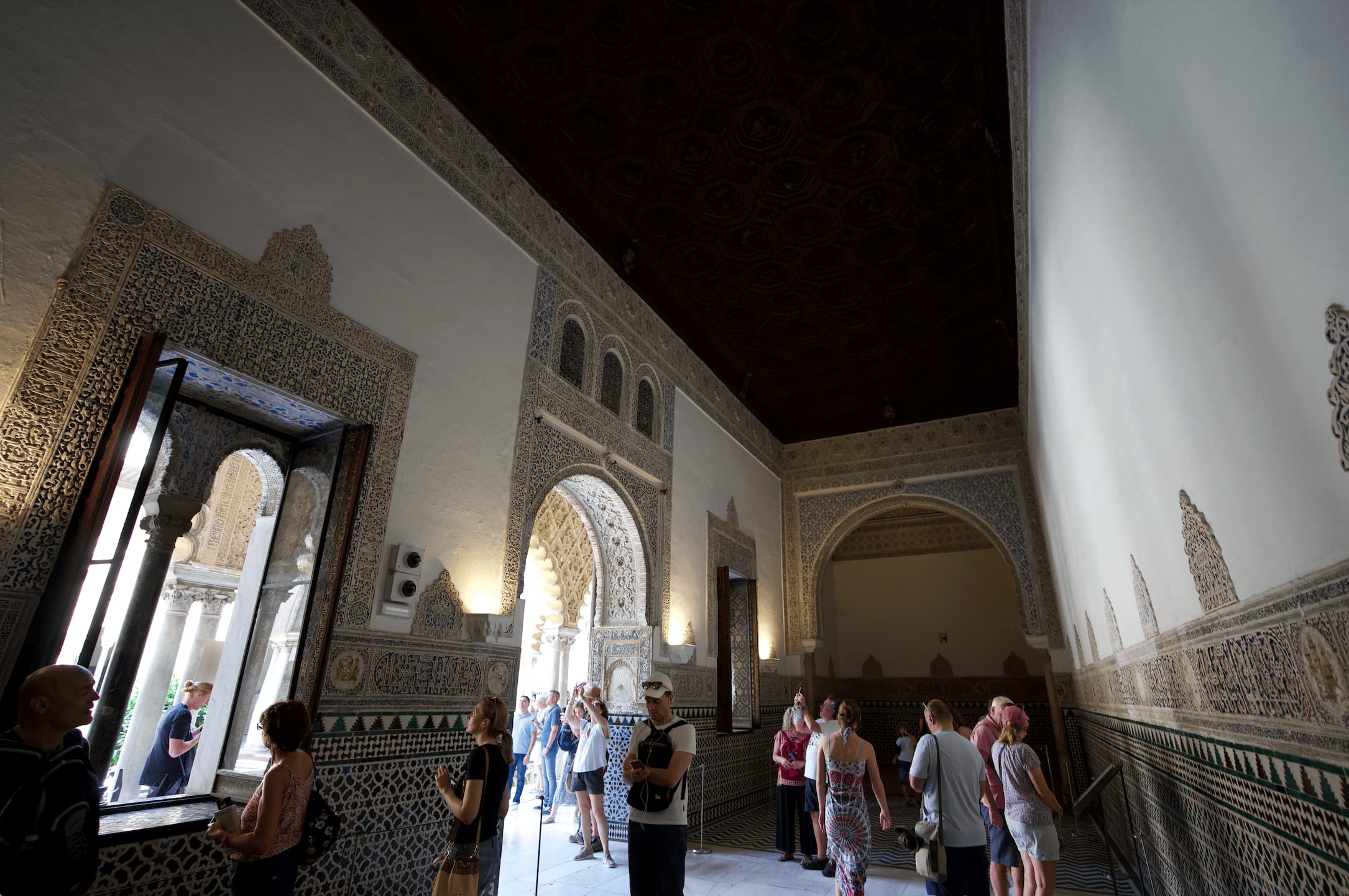
Its old town is known for being the most extensive in Spain. It is also one of the biggest in all of Europe. Furthermore, it is a famous and well-known Spanish destination for all ex-pat tourists. It reflects the art and culture of the south of Spain. Seville has a population of 684.234 and a metropolitan population of about 1.5 million, making it the largest city in Andalucia, the fourth in Spain, and the 26th most populous municipality in the European Union.
Another reason it might have that many people is its pleasant climate, especially in the spring months, and its luminosity during the whole year. This light produces positive energy that spreads in the cheerful character of its people. Sevillians are very friendly, and I even wrote an article about it in case you want to have a look: How I Found Out Spanish People Are Surprisingly Friendly.
5. Zaragoza

Zaragoza is the fifth largest city in Spain! With 675301 inhabitants, according to INE. This incredible city has passed through many processes and changes in history before becoming what it is now. The Independence war and the Napoleonic invasions made Zaragoza one of the most desolate cities in Spain. (around 1808 - 1814) It had 55 000 citizens and went to 12.000 survivors. Besides all, the dynamism of this principal capital, located in the middle of El Ebro Valley, allowed it to recover, and in 1850 it had almost got 60.000 inhabitants.
This significant change in demography was so notorious that it kept continuing in the second half of the XIX century, in which industrial activities were booming, such as sugar and beetroot activities, primarily in the food industry) it allowed the population to surpass 100.000 inhabitants at the beginning of the XX century.
Moreover, during the Second Republic, the city had 200.000 inhabitants, and in 1960 it got 300.000. However, the REAL takeoff happened between 1960 and 1980, with 600.000 people!! This number kept rising since the Aragonese population migrated from the countryside to the developed side of the city. In 2018 it already had 697.895 inhabitants, getting to what it is today. A beautiful city full of opportunities.
Don’t worry… I didn’t forget the table I promised you earlier. Here it is ;)
| PROVINCE | NAME | POPULATION 2021 |
|---|---|---|
| Madrid | Madrid | 3305408 |
| Barcelona | Barcelona | 1636732 |
| Valencia/València | València | 789744 |
| Sevilla | Sevilla | 684234 |
| Zaragoza | Zaragoza | 675301 |
| Málaga | Málaga | 577405 |
| Murcia | Murcia | 460349 |
| Balears, Illes | Palma | 419366 |
| Palmas, Las | Palmas de Gran Canaria, Las | 378675 |
| Bizkaia | Bilbao | 346405 |
| Alicante/Alacant | Alicante/Alacant | 337304 |
| Córdoba | Córdoba | 322071 |
| Valladolid | Valladolid | 297775 |
| Pontevedra | Vigo | 293837 |
| Asturias | Gijón | 268896 |
| Barcelona | Hospitalet de Llobregat, L' | 264657 |
| Araba/Álava | Vitoria-Gasteiz | 253093 |
| Coruña, A | Coruña, A | 245468 |
| Alicante/Alacant | Elche/Elx | 234205 |
| Granada | Granada | 231775 |
| Barcelona | Terrassa | 223011 |
| Barcelona | Badalona | 223006 |
| Asturias | Oviedo | 217552 |
| Murcia | Cartagena | 216365 |
| Barcelona | Sabadell | 216204 |
| Cádiz | Jerez de la Frontera | 212801 |
| Madrid | Móstoles | 209639 |
| Santa Cruz de Tenerife | Santa Cruz de Tenerife | 208563 |
| Navarra | Pamplona/Iruña | 203081 |
| Almería | Almería | 200753 |
I have a detailed excel sheet with some extra info that might be helpful for a deeper understanding. Check it out: https://docs.google.com/spreadsheets/d/16jnr4AN7Q6ywLNkSRENfyiYtnITVJPokhxKMGknLyTU/edit?usp=sharing
Now you’re an expert on the largest cities in Spain. If you enjoyed this post, maybe the following ones might be of your interest :)




